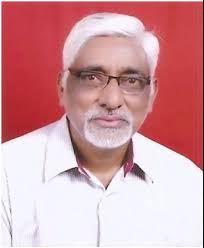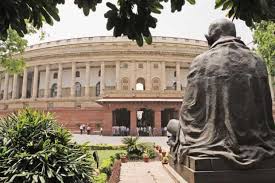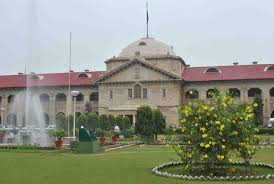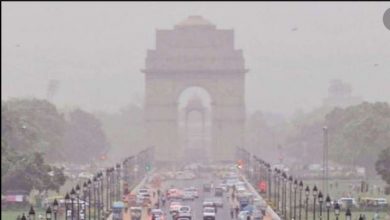Media in India: How to Face the Challenge of Credibility Crisis

India is a vast country that is home to different castes, creeds, and communities with their different traditions and ways of life. This diversity defines India’s socio-cultural structure and political superstructure which is the subject matter of media content writing. The media content concerning issues of governance and development is now a matter of intense debate as concerns are being expressed by all stakeholders about declining standards and professional ethics of journalism in our country.
To address the issue let us have a look at the evolution of journalism in India which can give us an idea of the conceptual framework to understand the present state of drift in Indian media.
Modern journalism in India started with a small English weekly launched by Augusts Hickey, a Calcutta based English man in 1780. The newspaper soon closed down because of opposition by the East India Company’s bureaucracy whose misdeeds and corrupt practices the newspaper tried to expose. There were some other attempts to start newspapers before Raja Ram Mohan Rai launched a series of newspapers which were the spokespersons of his social reform campaign. Launched in the early decades of the 19th century Raja Ram Mohan Rai’s three newspapers set the tone of what we even today call value-based journalism for the socio-economic development of our society.
By the start of the 20th century and growth of the movement for freedom from the British colonial movement, the Indian newspaper world had developed three distinct ideological trends. There were newspapers which supported British rule in India like The Statesman and The Times of India and were of the view that it was in the best interest of India and Indians.
These were newspapers which did not oppose the British rule but criticised the British Raj bureaucracy for its failings and incompetence. They were called Anglo India Press. The prominent newspapers which belonged to this category were The Pioneer of Allahabad, The Mail of what was then called Madras and The Civil and Military Gazette of Karachi.
The third category comprised newspapers that opposed the British rule in India and supported the Indian struggle for freedom from British rule. The Free Press Journal of Bombay, The Tribune of Lahore, The Hitvad of Nagpur, Amrit Bazar Patrika of Calcutta, and National Herald of Lucknow besides a big number of Indian languages newspapers belonged to this category. These three major ideological streams defined journalism in India of the time of its Independence. However, India’s independence brought about a policy shift in their editorial line. The British press became a supporter of the conservative public opinion and corporate world. The Anglo-Indian press retained its role as a critic of the Government of the day with the Idea to apply a correction to the establishment. The nationalist press, however, lost its plot as the great communal divide and the partition of the country made it clueless.
It is the loss of plot by this third stream of the press which is responsible for most of our media related problems that we face today. After the Independence media in India slowly started losing its ideological commitment to the common man and became what is popularly called from a mission to the profession. Media and media persons enjoy big clout in a democratic society and the media coverage can make a considerable impact on the careers of those in the position of authority. Similarly, media coverage can also influence policy decisions that vested interests always want in their favor. Therefore in our development social media became an instrument in the hands of power brokers. In fact, true professionalism touched only the fringe of the media industry in India. In the transition from mission to the profession, Indian media first became a management tool in the name of PR, advertising, and communication skills and then an instrument in the hands of the vested interests of big business and political dispensation. The spirit of idealism and commitment to the people’s cause was lost in the way.
The advent of TV and digital media has only strengthened this trend. Hailed as a magic multiplier that would generate mass consciousness and fight backwardness, both social and economic, TV made an entry in India about two decades after the Independence. Initially, it looked like living to its promise but soon became a soap opera. No doubt in just about 50 years T.V. media has developed in a big way. Now there are nearly 400 channels in India which telecast news and other programs in English and different Indian languages. Their combined audience strength is formidable. By a rough estimate, It could easily be around 600 million. To be fair, TV has no doubt played the role of a magic multiplier in India. Therefore, the widespread criticism bordering on condemnation and rejection of TV that we see today is singularly unfortunate. TV is neither evil nor a devil.
However, this is not to suggest that there is nothing wrong with TV in India. It has no doubt trivialized and trivialized news and content relating to critical issues of the public good. It has promoted sensationalism and has very, unfortunately, become a channel for disseminating false news. Even worse it is being labelled as promoting fake news and becoming what is being derisively called good media. All this has greatly damaged the credibility of Indian media in general.
Any decline in the basic standards of TV journalism is understandably a matter of great concern to all right-thinking people and stakeholders in the media. Therefore, the concerns being raised about the way T.V. journalism is going today are perfectly understandable. However, what is needed is an objective and analytical understanding of the problem and not outright condemnation and rejection of TV journalism. Cynicism does not help in understanding a problem and certainly, it cannot solve any. Let us make an attempt to understand the problem.
There are very few public-funded T.V. channels like Doordarshan, Lok Sabha TV, and Rajya Sabha TV. All private channels have to generate their own resources to survive in business Running a TV channel is a high-cost business. In a highly competitive advertising market, it is not easy to generate resources to run the business. Understandably the mortality rate of private TV channels is very high. A large number of viewers, popularity called TRP, improves the standing of a TV channel in the ad market. Unlike print media, TV media audiences are not necessarily intelligent, educated, and intellectually sophisticated. They may or may not have any understanding of the system and its institutions. Since the audience is the oxygen of mass media TV channels have to keep these large illiterate and semi-literate audiences in mind while shooting their programs.
And here lies the crux of the problem. Instead of producing the content that will attract, entertain and educate the masses and raise their level of understanding and perception, most of our channels are taking the content quality down to the level of dark, uneducated and unenlightened minds of their illiterate and semi-literate audiences. That is the reason while on the program side we have such stupid stuff like “ Patal ki Seedi and discovery of the kitchen of Sita Mata”, on the news side we have a totally distorted framework of history about which less said the better.
Obviously the question is what is the way out. The way out is difficult but not impossible. Indian masses, illiterate or semi-literate, who constitute the bulk of Indian TV audiences, are ever willing to listen and learn provided you know how to communicate with them. And to communicate with them successfully you have to understand them and not impose yourself on them. Mahatma Gandhi knew this fact. The problem with us in the world of communication is that we look down upon our audiences and think of ourselves as a class apart. The arrogance of Arnab Goswami is a testimony to this. This is all the more true when we relate to the poor, the illiterate, and semi-urban uneducated audiences. We presume that only stupid content will appeal to them. This is a monumental mistake that we commit.
The big challenge before us is a commitment to true professionalism and this calls for good media education, understanding of society, right perception, hard work.
A touch with ground reality and the right attitude. Only this will help us to be good content producers. A thorough study of the audience’s habits, behavior, and attitude is the need of the hour. This will give us an idea of motivating points in the audience psyche. These points have to be captured to make them interested in the real issues of health, education, jobs, and social participation Content creation has to be done on this basis. And this will help the media industry as well as our society. Only such an approach will give strength to Indian media, especially T.V. news, will arrest its declining trend and ensure that we regain the honor and prestige of media whose defining character has been marked by idealism and public service till recently. The End.
Media in India: How to Face the Challenge of Credibility Crisis
Prof Pradeep Mathur India is a vast country that is home to different castes, creeds, and communities with their different traditions and ways of life. This diversity defines India’s socio-cultural structure and political super-structure which is the subject matter of media content writing. The media content concerning issues of governance and development is now a matter of intense debate as concerns are being expressed by all stakeholders about declining standards and professional ethics of journalism in our country. To address the issue let us have a look at the evolution of journalism in India which can give us an idea of the conceptual framework to understand the present state of drift in Indian media.
Modern journalism in India started with a small English weekly launched by Augusts Hickey, a Calcutta based English man in 1780. The newspaper soon closed down because of opposition by the East India Company’s bureaucracy whose misdeeds and corrupt practices the newspaper tried to expose. There were some other attempts to start newspapers before Raja Ram Mohan Rai launched a series of newspapers which were the spokespersons of his social reform campaign. Launched in the early decades of the 19th century Raja Ram Mohan Rai’s three newspapers set the tone of what we even today call value-based journalism for the socio-economic development of our society.
By the start of the 20th century and the growth of the movement for freedom from the British colonial movement, the Indian newspaper world had developed three distinct ideological trends. There were newspapers that supported British rule in India like The Statesman and The Times of India and were of the view that it was in the best interest of India and Indians. These were newspapers that did not oppose the British rule but criticized the British Raj bureaucracy for its failings and incompetence. They were called Anglo India Press. The prominent newspapers which belonged to this category were The Pioneer of Allahabad, The Mail of what was then called Madras, and The Civil and Military Gazette of Karachi.
The third category comprised newspapers that opposed the British rule in India and supported the Indian struggle for freedom from British rule. The Free Press Journal of Bombay, The Tribune of Lahore, The Hitvad of Nagpur, Amrit Bazar Patrika of Calcutta, and National Herald of Lucknow besides a big number of Indian languages newspapers belonged to this category. These three major ideological streams defined journalism in India of the time of its Independence. However, India’s independence brought about a policy shift in their editorial line. The British press became a supporter of the conservative public opinion and corporate world. The Anglo-Indian press retained its role as a critic of the Government of the day with the Idea to apply a correction to the establishment. The nationalist press, however, lost its plot as the great communal divide and the partition of the country made it clueless.
It is the loss of plot by this third stream of the press which is responsible for most of our media related problems that we face today. After the Independence media in India slowly started losing its ideological commitment to the common man and became what is popularly called from a mission to the profession. Media and media persons enjoy big clout in a democratic society and the media coverage can make a considerable impact on the careers of those in a position of authority. Similarly, media coverage can also influence policy decisions which vested interests always want in their favour. Therefore in our developing social media became an instrument in the hands of power brokers. In fact, true professionalism touched only the fringe of the media industry in India. In the transition from mission to profession, Indian media first became a management tool in the name of PR, advertising and communication skills and then an instrument in the hands of the vested interests of big business and political dispensation. The spirit of idealism and commitment to the people’s cause was lost in the way.
The advent of TV and digital media has only strengthened this trend. Hailed as a magic multiplier that would generate mass consciousness and fight backwardness, both social and economic, TV made an entry in India about two decades after the Independence. Initially, it looked like living to its promise but soon became a soap opera. No doubt in just about 50 years T.V. media has developed in a big way. Now there are nearly 400 channels in India which telecast news and other programs in English and different Indian languages. Their combined audience strength is formidable. By a rough estimate, It could easily be around 600 million. To be fair, TV has no doubt played the role of a magic multiplier in India. Therefore, the widespread criticism bordering on condemnation and rejection of TV that we see today is singularly unfortunate. TV is neither evil nor a devil.
However, this is not to suggest that there is nothing wrong with TV in India. It has no doubt trivialized and trivialized news and content relating to critical issues of the public good. It has promoted sensationalism and has very, unfortunately, become a channel for disseminating false news. Even worse it is being labelled as promoting fake news and becoming what is being derisively called good media. All this has greatly damaged the credibility of Indian media in general. Any decline in the basic standards of TV journalism is understandably a matter of great concern to all right-thinking people and stakeholders in the media. Therefore, the concerns being raised about the way T.V. journalism is going today are perfectly understandable. However, what is needed is an objective and analytical understanding of the problem and not outright condemnation and rejection of TV journalism. Cynicism does not help in understanding a problem and certainly, it cannot solve any.
Let us make an attempt to understand the problem. There are very few public-funded T.V. channels like Doordarshan, Lok Sabha TV, and Rajya Sabha TV. All private channels have to generate their own resources to survive in business ness. In a highly competitive advertising market, it is not easy to generate resources to run the business. Understandably the mortality rate of private TV channels is very high. A large number of viewers, popularity called TRP, improves the standing of a TV channel in the ad market. Unlike print media, TV media audiences are not necessarily intelligent, educated, and intellectually sophisticated. They may or may not have any understanding of the system and its institutions. Since the audience is the oxygen of mass media TV channels have to keep these large illiterate and semi-literate audiences in mind while shooting their programs. And here lies the crux of the problem. Instead of producing the content that will attract, entertain and educate the masses and raise their level of understanding and perception, most of our channels are taking the content quality down to the level of dark, uneducated and unenlightened minds of their illiterate and semi-literate audiences.
That is the reason while on the program side we have such stupid stuff like “ Patal ki Seedi and discovery of the kitchen of Sita Mata”, on the news side we have a totally distorted framework of history about which less said the better. Obviously the question is what is the way out. The way out is difficult but not impossible. Indian masses, illiterate or semi-literate, who constitute the bulk of Indian TV audiences, are ever willing to listen and learn provided you know how to communicate with them. And to communicate with them successfully you have to understand them and not impose yourself on them. Mahatma Gandhi knew this fact. The problem with us in the world of communication is that we look down upon our audiences and think of ourselves as a class apart. The arrogance of Arnab Goswami is a testimony to this. This is all the more true when we relate to the poor, the illiterate, and semi-urban uneducated audiences. We presume that only stupid content will appeal to them. This is a monumental mistake that we commit.
The big challenge before us is a commitment to true professionalism and this calls for good media education, understanding of society, right perception, hard work. A touch with ground reality and the right attitude. Only this will help us to be good content producers. A thorough study of the audience’s habits, behavior, and attitude is the need of the hour. This will give us an idea of motivating points in the audience psyche. These points have to be captured to make them interested in the real issues of health, education, jobs, and social participation Content creation have to be done on this basis. And this will help the media industry as well as our society. Only such an approach will give strength to Indian media, especially T.V. news, will arrest its declining trend and ensure that we regain the honor and prestige of media whose defining character has been marked by idealism and public service till recently.





